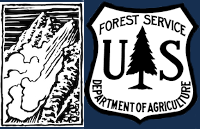GNFAC Avalanche Forecast for Thu Feb 1, 2018
<p>Snow stability is variable in the mountains around Cooke City. Some slopes have a deep and stable snowpack, while others have buried weak layers capable of producing avalanches. A layer of surface hoar 1-2’ deep has produced unstable results in stability tests and may be the culprit of recently triggered avalanches (<a href="https://www.mtavalanche.com/images/18/remote-triggered-soft-slab"><stro…;, <a href="https://www.mtavalanche.com/images/18/remote-triggered-soft-slab-0"><st…;). This layer has sporadic distribution making careful snowpack evaluation essential.</p>
<p>Facets buried deeper in the pack also remain a concern. A large natural avalanche on Woody Ridge south of town is a good reminder of what’s still possible (<a href="https://www.mtavalanche.com/images/18/natural-avalanche-woody-ridge"><s…;). Today, the likelihood of a triggering a slide increases on wind loaded slopes. Watch for and avoid wind loaded areas and assess non-wind loaded slopes carefully before traveling in avalanche terrain.</p>
<p>Read a recent blog post on the complexities of the snowpack around Cooke City: <a href="https://www.mtavalanche.com/blog/additional-thoughts-regarding-my-uncer…;
<p>For today, the avalanche danger is rated <strong>CONSIDERABLE </strong>on wind loaded slopes and <strong>MODERATE</strong> on non-wind loaded slopes.</p>
<p>The snowpack is getting stronger in the southern ranges (<a href="https://youtu.be/-5OhvArl2P0"><strong>video</strong></a>), but there are isolated instabilities too look for. On Tuesday, Doug and I skied into Bacon Rind in the southern Madison Range and had a layer of surface hoar propagate in our stability test (<a href="https://youtu.be/thn9hnFUi4Y"><strong>video</strong></a><strong>, </strong><a href="https://www.mtavalanche.com/images/18/ectp-12-bacon-rind"><strong>photo…;). Alex also got unstable results on this layer near West Yellowstone earlier in the week (<a href="https://youtu.be/gKvrr5JHODA"><strong>video</strong></a>). Buried surface is not producing widespread instability, but should be looked for and assessed before riding steeper slopes. In addition to buried surface hoar, wind slabs could also produce human triggered slides. Fresh wind slabs most likely exist on slopes leeward to west-northwest winds. Avoid slopes below cornices or any areas that have large pillows of wind drifted snow.</p>
<p>Today, buried surface hoar and wind slabs make human triggered avalanches possible and the avalanche danger is rated <strong>MODERATE</strong>.</p>
<p>The primary avalanche problem in the mountains around Bozeman and Big Sky is wind slabs. On Tuesday, 3-5” of low density snow fell across the northern areas. This snow was transported onto leeward slopes by moderate to strong winds out of the west-northwest. Yesterday, my partner and I skied around Mt Blackmore in Hyalite and observed large cornices and wind loading along the ridgelines (<strong><a href="https://www.youtube.com/watch?v=-Kh4wvvQ3Wk">video</a></strong>). While many wind-loaded slopes will be stubborn to trigger, some could avalanche from the weight of a skier or rider. Search for wind-loading in gullies, on roll-overs, and of course, under ridgelines (<a href="https://www.mtavalanche.com/images/18/wind-blowing-snow-bridgers"><stro…;). Outside of wind loaded slopes, the snowpack is mostly stable.</p>
<p>For today, the avalanche danger is rated <strong>MODERATE</strong> on all wind-loaded slopes and <strong>LOW</strong> elsewhere.</p>
<p>If you get out and have any avalanche or snowpack observations to share, drop a line via our <a href="https://www.mtavalanche.com/node/add/snow_observation">website</a>, email (<a href="mailto:mtavalanche@gmail.com">mtavalanche@gmail.com</a>), phone (406-587-6984), or Instagram (#gnfacobs).</p>
King and Queen of the Ridge
King and Queen of the Ridge, Saturday, February 3rd. A Hike and Ski/Ride-a-Thon fundraising event to support the Friends of the Gallatin National Forest Avalanche Center. Sign up and start collecting pledges HERE.
